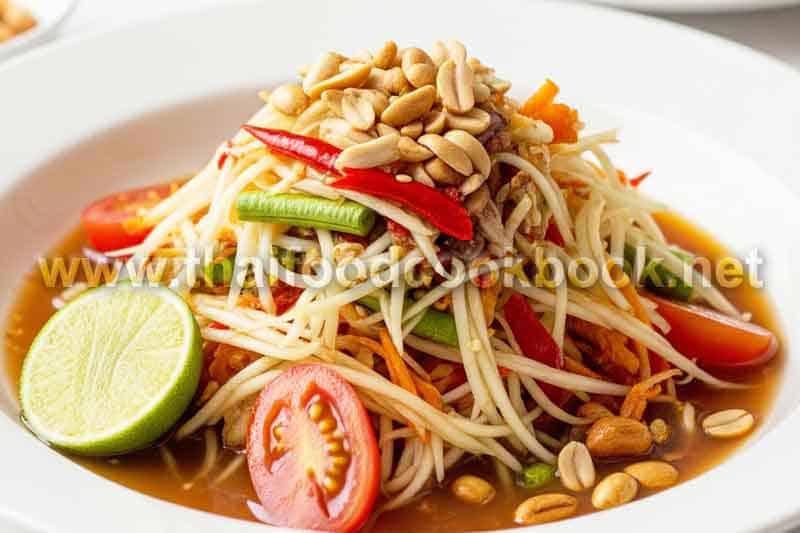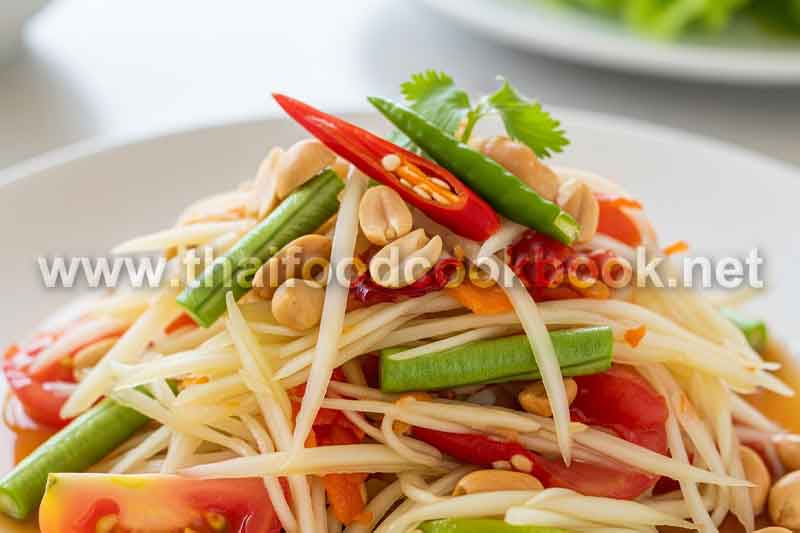What Makes a Thai Food Recipe Authentic? A Beginner’s Guide
Many people around the world fall in love with Thai food long before they understand what truly defines an authentic Thai food recipe. Some believe authenticity comes from old family traditions, while others assume it means using only ingredients grown in Thailand. Yet for many beginners, the idea of identifying a real or traditional Thai cooking style can feel confusing, especially when modern recipes often adapt flavors to suit international tastes. The question what makes a Thai dish authentic is not as simple as whether a dish “tastes good”—it is rooted in culture, ingredients, techniques, and the philosophy of balance that Thai cuisine is built upon. To understand an authentic Thai food recipe is to understand the story behind each flavor.
One of the biggest challenges for beginners is learning how to separate what is “authentic” from what is simply “inspired by Thai flavors.” Modern restaurants outside Thailand often modify a recipe to match local tastes—less spice, fewer herbs, or replacing harder-to-find Thai ingredients with substitute products. These shortcuts may still produce a delicious meal, but they slowly erase the very identity of a dish. When someone tries to learn how to cook Thai food the traditional way, they often struggle to determine whether they are learning a recipe preserved from Thai culinary culture or an adapted version made for convenience. Authenticity in Thai cuisine is not just about using fish sauce or chilies—it is about respecting the structure of flavor harmony: spicy, sour, salty, sweet, and sometimes bitter.
The deeper you explore real Thai flavors, the more you discover the role that herbs, aromatics, and seasoning techniques play in preserving cultural identity. For instance:
- Thai basil, not Italian basil, defines fragrance in stir-fries and curries.
- Kaffir lime leaves, not lemon zest, give soups and stews their authentic aroma.
- Galangal, not ginger, is responsible for the earthy foundation of broths.
- Palm sugar, not granulated sugar, creates roundness and depth in sweetness.
These details may appear small, but they are what separate a purely “Thai-style” dish from a truly original Thai recipe. The use of correct ingredients is a form of communication: each herb conveys memory, geography, and heritage. Without them, a dish might look like Thai food but lose its soul. So if a beginner wants to create cooking that reflects real Thai flavors, they must understand that authenticity begins with respecting the agricultural roots behind each ingredient.
Another vital pillar of authenticity is preparation technique. Many first-time learners do not realize that Thai cuisine is built on a sequence of layering flavors rather than mixing everything at once. Stir-frying garlic and chili before adding meat unlocks aroma. Blooming curry paste in hot oil awakens the natural oils from herbs. Crushing herbs in a mortar and pestle rather than blending them releases oils slowly and deeply. These steps are not “extra tasks”—they are the traditional method that transforms ingredients into identity. Without them, a dish may taste similar, but it no longer expresses the same cultural lineage.
When a recipe remains loyal to these cultural components, it becomes more than just food: it becomes history expressed through taste. This is why even a basic beginner’s guide to authentic Thai flavors must first learn respect for tradition before learning measurements or cooking time. Authenticity is not about strict perfection—it is about preserving intention. Food cooked with the correct philosophy still feels Thai even when presented with creativity or personal touch.
Understanding the Cultural Roots Behind Authentic Thai Cuisine
To truly understand what makes a Thai food recipe authentic, a beginner must first recognize that Thai food is more than flavor; it is storytelling through ingredients, rituals, and environment. Thai people have historically cooked with an awareness of climate, season, and available harvest, which is why authenticity is tied to geography. In regions such as the North, dishes carry earthy warmth and natural bitterness from herbs, while Southern curries contain layers of pungent spice influenced by coconut groves and the ocean. Learning how to cook Thai food the traditional way also means learning why a dish tastes the way it does—not only how it is prepared.
Authenticity also comes from respect for community wisdom. Throughout generations, recipes were never measured with exact teaspoons; they were guided by memory and intuition. A truly authentic Thai food recipe follows the heart before the timer, and this flexibility is what allows dishes to stay alive in every Thai household. The recipe is not only a method; it is a teacher that reflects ancestral connection. Without understanding this cultural philosophy, even correct ingredients cannot produce true authenticity.
Below are the most essential cultural markers that define an authentic Thai dish:
- Origin of the recipe – Whether it comes from a town, temple, or traditional household method.
- Non-industrialized preparation – Use of mortar and pestle, sun-dried herbs, and handmade pastes.
- Balance before symmetry – Taste harmony is valued more than identical measurement.
- Ingredients tied to place – Thai-grown aromatics carry terroir-like properties similar to wine.
- Cooking as cultural expression – Meals are not only food but heritage.
Mastering these foundations helps beginners identify whether they are cooking real Thai food or a globalized adaptation meant for convenience. A recipe might call itself “Thai,” but without these deeper characteristics, the soul of the dish is missing.
Ingredients That Preserve Authenticity in Thai Cooking
Another key to identifying an authentic Thai food recipe is understanding ingredient fidelity. Substitutions are sometimes necessary for geographical reasons, but authenticity depends on preserving intention. When the fundamental identity of the dish relies on a specific herb or sauce, replacing it can change the character of the entire meal. This is why learning traditional Thai cooking often begins with mastering ingredients before mastering heat.
Below are essential ingredients that hold cultural and flavor identity:
- Fish sauce for saltiness and depth instead of soy-based substitutes.
- Lemongrass for aroma instead of lemon peel.
- Thai bird’s eye chili for authentic heat and fragrance.
- Tamarind pulp for sourness instead of vinegar or lime alone.
- Coconut cream traditionally thickened by simmering, not stabilizers.
These selections embody the sensory identity of a dish. For example, without tamarind, Pad Thai becomes merely a stir-fry noodle dish. Without kaffir lime leaves, Tom Yum loses its emotional resonance and becomes a broth lacking cultural distinction. When beginners learn how to recognize these ingredients, they no longer follow trends—they follow tradition.
Techniques That Protect Authentic Thai Flavors
For many learners, technique is the turning point between imitation and authenticity. The method used to extract flavor matters as much as the recipe itself. Stirring, simmering, grinding, resting, layering, and blending timing reflect ancient culinary rhythm. Authenticity means knowing when to heat, when to cool, and when to allow fragrance to bloom on its own.
Examples of traditional techniques include:
- Blooming curry paste in oil before adding coconut milk to unlock herbs.
- Grinding spices manually to preserve oil content and natural aroma.
- Seasoning in stages rather than combining everything at once.
- Layering fresh herbs at the end for aroma release.
- Balancing salt, sweet, and sour before adjusting spice.
Authenticity is the science of patience and intuition. Many recipes outside Thailand skip these essential steps, but mastering them is what allows beginners to cook like locals. Without these methods, a dish may look correct but taste emotionally incomplete.
How to Tell if a Thai Recipe is Truly Authentic
So, how can a beginner confidently know whether a Thai recipe is authentic? The answer lies in recognizing three dimensions: cultural fidelity, ingredient integrity, and technique preservation. These three elements combine to express tradition without claiming perfection. Authentic dishes may vary from home to home, but what they preserve is not uniformity—it is essence.
Here is a simple framework beginners can use when evaluating authenticity:
- Does the recipe use heritage ingredients? If the key aromatics are replaced, authenticity weakens.
- Does the method involve layering flavors? Oil blooming, mortar grinding, and staged seasoning signal tradition.
- Does the flavor profile respect Thai structure? Balance precedes personal interpretation.
The more someone understands these foundations, the more they can appreciate not only how to cook Thai dishes but how to feel connected to the culture that created them. Authenticity is not strict repetition—it is preservation with respect.
Summary
Authentic Thai cuisine is defined by cultural origin, ingredient integrity, and preserved technique. A truly authentic Thai food recipe stays faithful to Thai heritage by using real herbs, layering flavor correctly, and protecting the soul of each dish. Even beginners can recognize authenticity by observing balance, preparation, and respect for culinary roots. The more deeply a cook preserves these traditions, the closer their dish becomes to the spirit of Thai food in its truest form.

